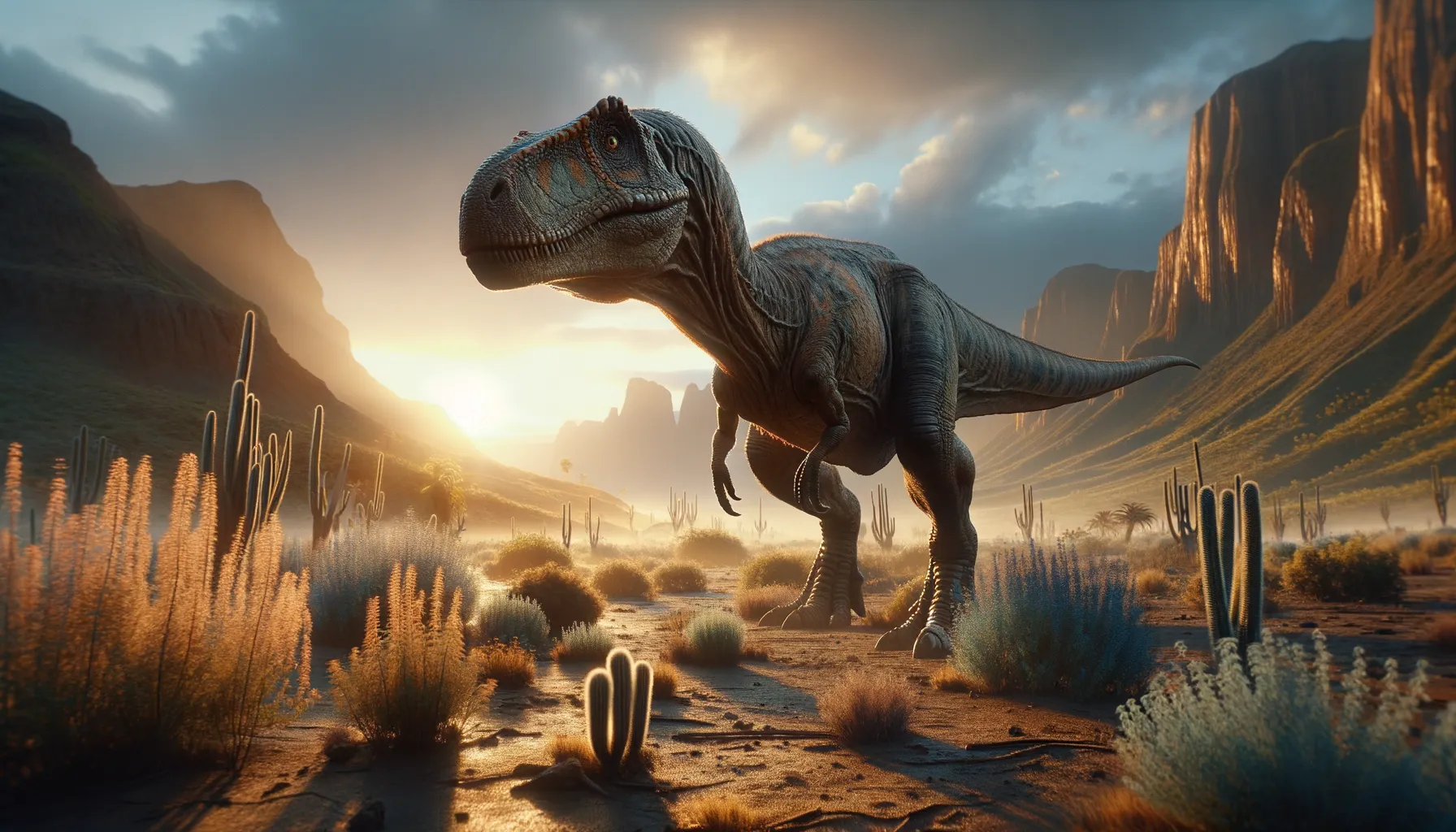
Lophostropheus
A swift predator of the early Jurassic.
Period
triassic
Length
Up to 6 meters long.
Height
Roughly 1.5 meters at the hip.
Weight
Approximately 100 to 200 kilograms.
Lophostropheus was a small, nimble theropod dinosaur that lived during the early Jurassic period. Its body was built for speed, with long legs and a lightweight frame that made it a proficient hunter and scavenger. Although it was not among the largest of dinosaurs, its agility and sharp senses left a significant mark on the prehistoric ecosystems it inhabited. With only a few fossils available, Lophostropheus provides a tantalizing glimpse into the life of early Jurassic predators.
Diet
Lophostropheus was a carnivore, primarily feeding on small animals, insects, and possibly the eggs of other dinosaurs. Its sharp teeth and quick movements made it effective at capturing prey.
Hunting
Lophostropheus likely used its speed and agility to hunt, preferring to stalk and ambush smaller animals. It may have hunted alone or in small packs to improve its chances of successfully capturing prey.
Environmental challenges
During the early Jurassic period, Lophostropheus faced competitive pressures from other theropods and changing environments. Fluctuations in climate and the availability of prey required adaptability for survival. Additionally, evolving flora and fauna likely presented new feeding opportunities and threats in its habitat.
Speed
Moderate; likely reached up to 30 km/h.
Lifespan
Estimated around 15 to 20 years.
First discovery
First discovered in France in the late 19th century.
Fun Facts
- Lophostropheus was a small dinosaur about 3 meters (10 feet) long, roughly the size of a large dog.
- It lived during the late Triassic to early Jurassic period, making it one of the early dinosaurs.
- Lophostropheus belonged to a group of dinosaurs called theropods, which are known for their three-toed limbs.
- Fossils of Lophostropheus have been found in France, which gives scientists clues about the dinosaur's environment and life.
- Its name means 'crest vertebra,' referring to the unique crest-like features found on its vertebrae.
- Lophostropheus was likely a carnivore, feeding on smaller animals and possibly insects.
- This dinosaur helps scientists understand the transition between the Triassic and Jurassic periods, a time of significant evolutionary change.
Growth and Development
Lophostropheus experienced rapid growth during its juvenile years, allowing it to quickly reach a size that minimized predation risks. Its bones show growth patterns consistent with a dynamic metabolism. Development included honing hunting skills and adapting to different environmental conditions.
Habitat
Lophostropheus inhabited regions that were rich in forested areas and open plains, which provided ample prey and places to hide. The environment offered diverse ecological niches, allowing it to scatter and adapt according to available food sources. Water sources in its habitat were crucial for sustaining life.
Interaction with other species
Lophostropheus coexisted with other small and medium-sized theropods, likely competing for similar food resources. It might have exhibited opportunistic scavenging behaviors on carcasses left by larger predators. Additionally, interactions with herbivorous dinosaurs could have included attempts to prey on smaller or young individuals.
Natural lifespan
Lophostropheus had a natural lifespan that averaged around two decades.
Reproduction
Lophostropheus likely reproduced through egg-laying, with nesting habits that involved laying eggs in concealed locations. Parental care might have included guarding the nest, although it's unclear if further nurturing occurred post-hatching. Fossil evidence supports the presence of clutch sizes similar to other theropods.
Social behaviour
Lophostropheus might have exhibited some pack behavior, aiding in coordinated hunting or providing defense against larger predators. Social interactions could have included basic communication signals to warn of threats or signal opportunities. Solitary behavior was also likely common, especially during non-breeding seasons.
Fossil locations
Fossils of Lophostropheus have been found primarily in sedimentary rock formations in France. Excavations in these regions have provided valuable insights into its morphology and lifestyle. The discovery of additional specimens remains limited, highlighting the rarity of well-preserved remains for this species.
